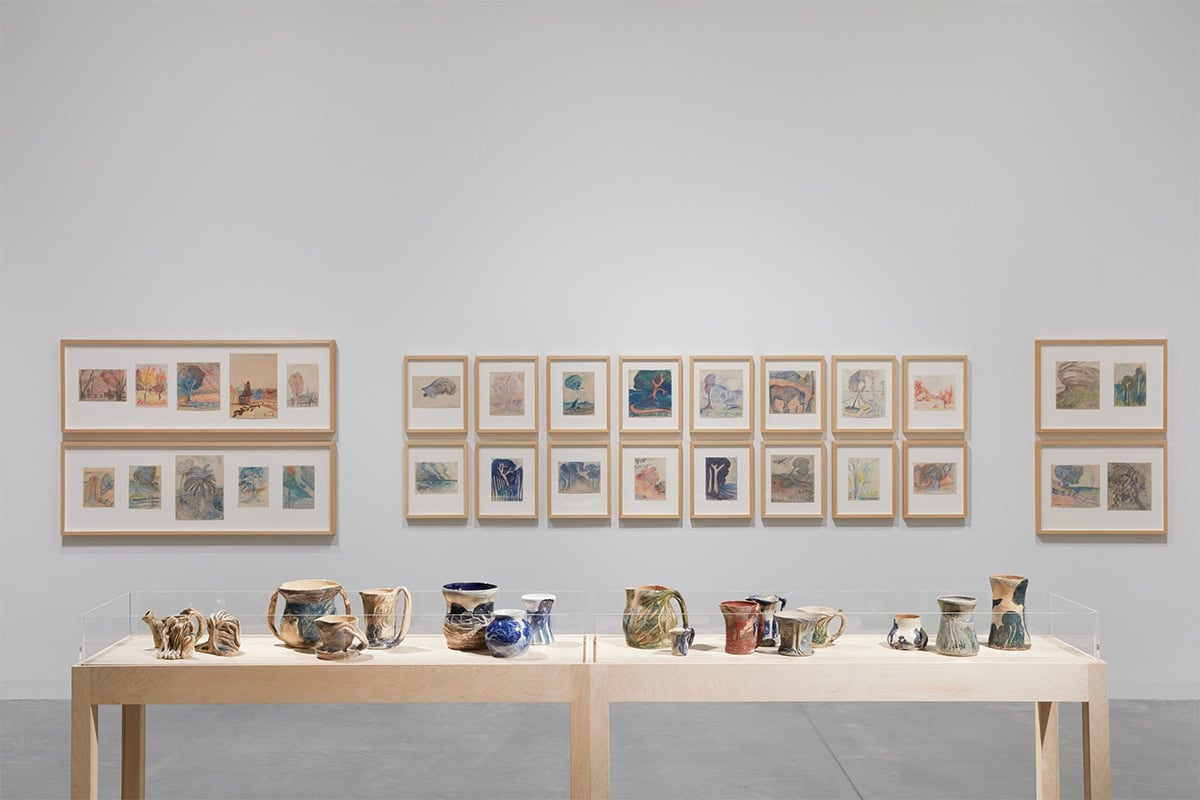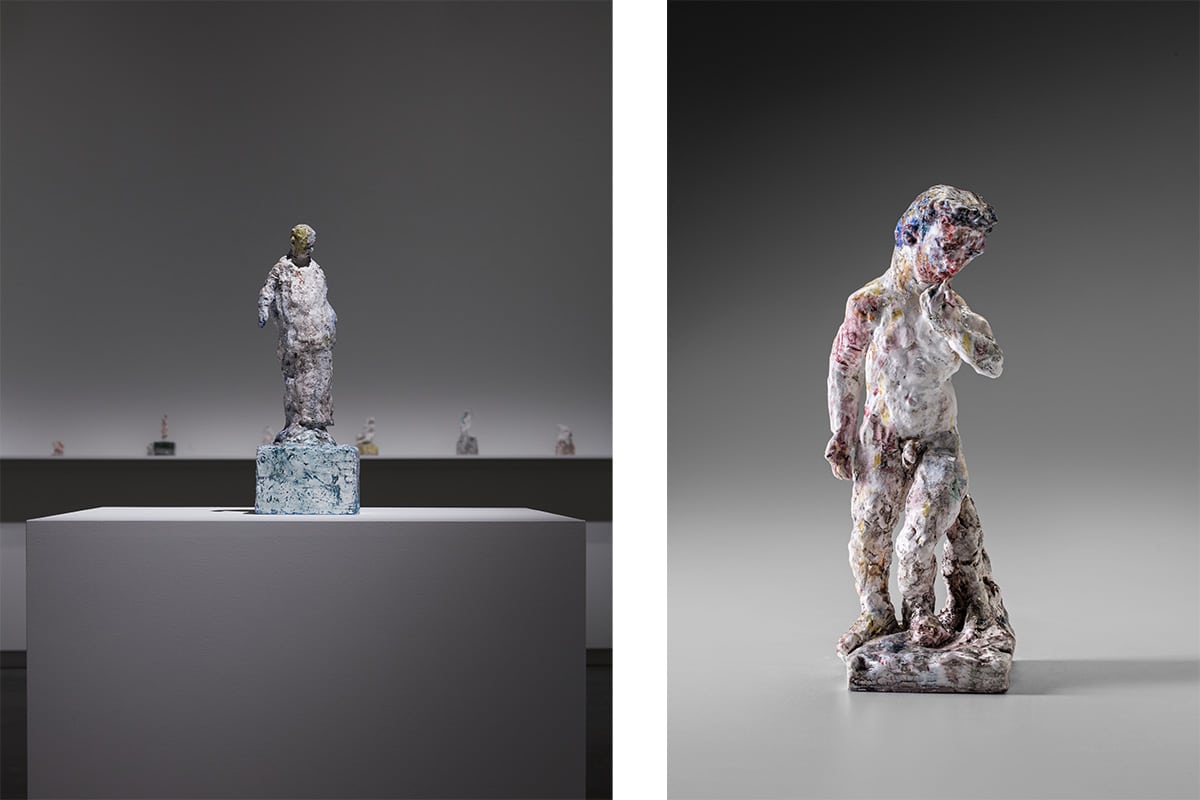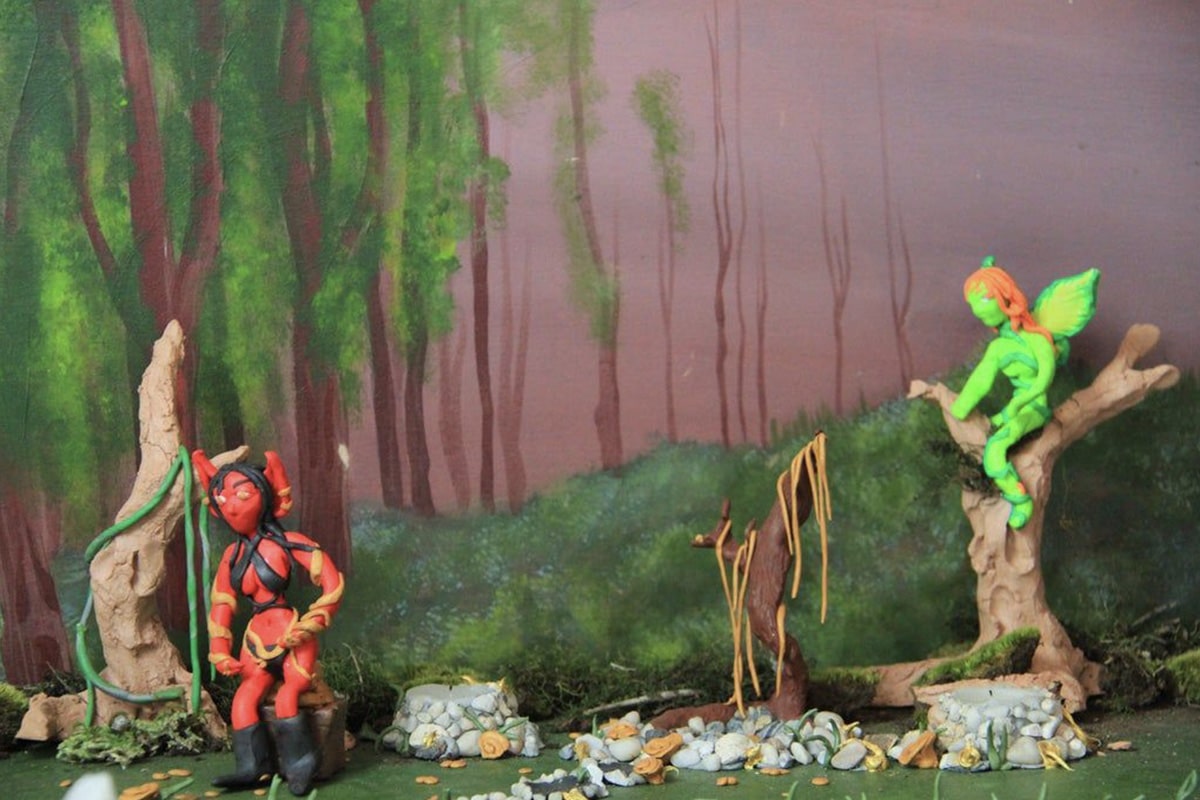
The story goes Arthur Boyd sought to share the marvel of Bundanon with the Australian people and in 1993, after a decade of organising, the celebrated painter successfully gifted his expansive property overlooking the Shoalhaven river to the Federal Government. 30 years later, Bundanon celebrates its anniversary with the opening of new exhibition, Fantastic Forms, one that aims to take pleasure in the ritual of artmaking using Merric Boyd's ceramics and drawings as a conversation starter.
Merric Boyd, father to Arthur and his four siblings Mary, David, Guy and Lucy, is widely considered Australia's first studio potter and began experimenting with the medium for an early age. He was prolific – his ceramics can be found in suburban kitchens and galleries alike. Boyd also suffered from epilepsy at a time when the condition was largely misunderstood, and so in his final years, when he no longer had the dexterity for pottery, he produced a wealth of drawings. Some of which are among the 200 Merric Boyd artworks included in Fantastic Forms.

Also placed in dialogue with the artworks of Merric Boyd, are the bodies of work from three fellow Australian artists. At first glance, Nabilah Nordin, Stephen Benwell and Rubyrose Bancroft's practices are loosely linked if only by their shared mediums. Pay closer attention and you'll see their penchant for manipulating materials is in service of irreverence.
In the same way a dancer seeks out new pathways of movement, through sculpture, Nordin experiments with traditional and unconventional materials in the hope of unlocking unexpected results. This irreverence can be found in her tongue-in-cheek bronze, a fusion of timber and wax. Benwell, on the other hand, toys with masculinity in his ceramic figurines, warping mini statues of male nudes into pained, tragicomic stances, casting off any heroic sensibility in place of an overwhelming sense of fallibility. Then there is the euphorically-soundtracked claymations from Bancroft, who represents each of the seven deadly sins through absurdly rendered plasticine avatars in a woodland setting.
Ahead of the opening of Fantastic Forms, RUSSH spoke with the three artists involved. See our conversations, below.
Nabilah Nordin

What’s the first thing we should know about you?
I’m an artist who loves surprises. I am always surprised by the potential of materials – what can materials do, how can materials perform and how does it disrupt our sense of familiarity?
Can you describe the artworks you created for Fantastic Forms in your own words? What was that process like?
With the generous support of Bundanon, I am presenting three new works including my first large scale bronze work. I worked with Mal Wood Foundry to realise the transformation of a timber and wax form into bronze. There is also a work called Pavilion that is made entirely out of timber and rags. I dipped, dyed and blotched magenta and blue hues across the work. In another work, Thick Fight, I smothered a cluster of forms in epoxy clay, leaving the indents of my fingers exposed. This work was then elevated on an absurdly large plinth playing on the history of monumental sculpture.
What aspect of Merric Boyd’s practice were you drawn to while creating your body of work for Fantastic Forms?
I am drawn to Merric Boyd’s colour washes, improbable forms, observation of trees and animals, the movement in the drawings, spilling of ideas and the vivid energy that is so directly connected to Boyd’s surroundings.
Merric Boyd weaved native flora and fauna into his work. Is your own artwork for Fantastic Forms influenced by the landscape surrounding Bundanon?
I have been inspired by the loose gestures, quick markings, flowing expression, lines and organic forms from Merric Boyd’s drawings. Being able to spend some time at Bundanon, I connected with the incredible landscape and surroundings.
What’s inspiring you and your world right now?
I am inspired to travel, meet more artists, live in new places and be challenged by my work and environment.
Stephen Benwell

What’s the first thing we should know about you?
I’m gay.
Can you describe the artworks you created for Fantastic Forms in your own words? What was that process like?
For the last 20 years I have been making small scale ceramic statues of the (mostly) male nude. Firstly they were naked shepherds made during MFA research into queer pastoral (Monash University 2005). Exploring the male nude through the lens of queer has been a focus of my practice since that research was completed. For this exhibition Fantastic Forms a group of 31 of these statues made between 2015 and 2023 will be exhibited. I am excited about this because it’s the first time that the statue series has been singled out for exhibition.
What aspect of Merric Boyd’s practice were you drawn to while creating your body of work for Fantastic Forms?
I made these works before I knew about the exhibition so I couldn’t say Merric Boyd’s ceramics had any recent influence. However when I first began making pottery around 1970, I was aware of his pottery which I believe are a combination of wheel thrown and hand built elements. These pots belong to the tradition of ‘sculptural pottery’ which is a movement that I also became a part of. I consider it a great honour to be exhibiting alongside a pottery legend such as Merric Boyd.
What’s inspiring you and your world right now?
Fragility, destruction, nervous, concern for the state of the world.
Rubyrose Bancroft

Still 3 from the 7 Deadly Sins.
What’s the first thing we should know about you?
The first thing would be that I am a proud Bundjalung woman from the Djanbun Clan in Western Bundjalung Nation.
Can you describe the artworks you created for Fantastic Forms in your own words? What was that process like?
The works created are mixed media claymations, using things like clay, plasticine, sticks, wax and other mediums to depict the many universes in my mind. The worlds are created with my childlike perspective, hoping to bring the viewer back to their young naive childlike state. The process is time consuming no matter how long the narrative is, the process can take up to 6 months to make one of my claymations. I love creating tiny worlds and beautiful fantastic dioramas.
What aspect of Merric Boyd’s practice were you drawn to while creating your body of work for Fantastic Forms?
I created most of these works while I was still in Art school back in 2020 and during Covid when I was isolating in a rainforest near Byron Bay is where I took most of my inspiration. The gallery scene I created for Fantastic Forms is inspired from Boyd’s Koala Mugs and his other ceramic pieces.
Merric Boyd weaved native flora and fauna into his work. Is your own artwork for Fantastic Forms influenced by the landscape surrounding Bundanon?
My work is heavily influenced by Flora and fauna as our family have always spent time in the bush. I try to create work with a sense of unlimited imagination, allowing the scenes to take place in any time or era, making them relatable for many from anywhere in the world.
What’s inspiring you and your world right now?
It has been hard to be inspired with the destruction of natural environments and big corporations polluting the earth but especially in the last two years with huge Floods in the North Coast and the lasting effects still to this day. I still find inspiration in the little moments, like seeing a black cockatoo and knowing that rain is coming or the feeling of diving into an ice cold river. I think the world is magical and it always will be as long as you hold onto your imagination and respect it.
Fantastic Forms is open at Bundanon Art Museum now until June 18, 2023.



